The 1870s Year by Year
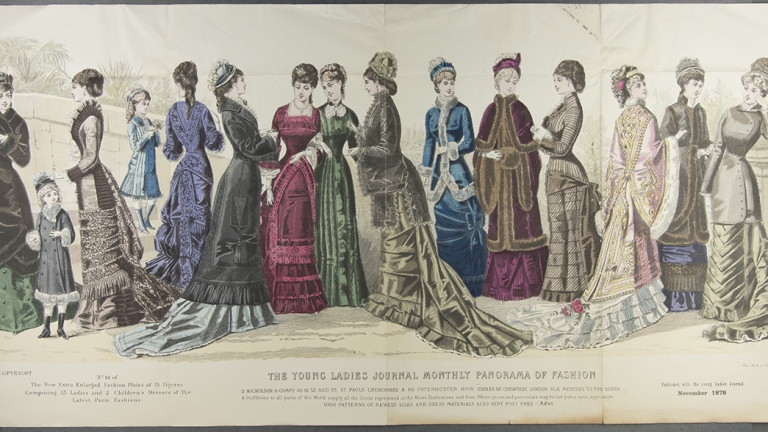
by Judith Hollenberger Dunlap, First published for the January/February 2013 issue of Finery

The decade of 1870-1879 included drastic changes of silhouette in women’s clothing. The large elliptical hoop of the late 1860s was pushed back into a bustle, which was quickly dropped for a form fitting ‘natural’ shape. Natural in name only, as it was achieved by lengthening the corset and adding ties to the skirts to retain the proper shape. The 1870’s also began the rise of artistic dress and the seeds of dress reform for health reasons. More middle and upper class young women entered the workforce and consumers’ demand for ready-made costumes bloomed.
Newly discovered aniline dyes came into vogue, sparking interest in bright colors. Outfits often featured two colors and even two materials. This was the great age of trimming Multiple layers of trim became standard. The flounce on a skirt could not be plain, it must be augmented with flutings, piping, bias bands, fringe, lace, etc. What follows is a year by year guide to the fashions and world events of the 1870s.
1870 – Black males receive the right to vote, and the Confederated States of America is officially dissolved when Georgia is the last state to be readmitted into the Union.
1871 – The rise of the Polonaise. The bodice and tunic become one and puffing at the back of the waist declines. The first professional baseball league debuts.
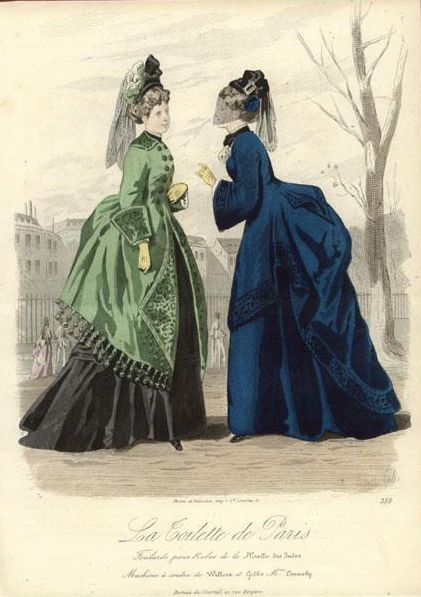
1872 – Fashionistas begin to use different materials between the Polonaise and skirt. Outfits are no longer made of all wool or all silk. Yellowstone National Park is established as the first National Park in the United States and Susan B. Anthony casts an illegal ballot in the presidential election to publicize the cause of women’s suffrage.
1873 – The amount of trimming increases. A day dress might have two or three flounces, each headed with a band of puffing and a narrow frill. Up to forty yards of fabric could be used in a single dress. A magazine recommends that flounces must be “piped and edged and waved and headed with a score or more of less fanciful devices.” Against this backdrop of frills, a New York stock market crash in September begins a five year economic depression in America.
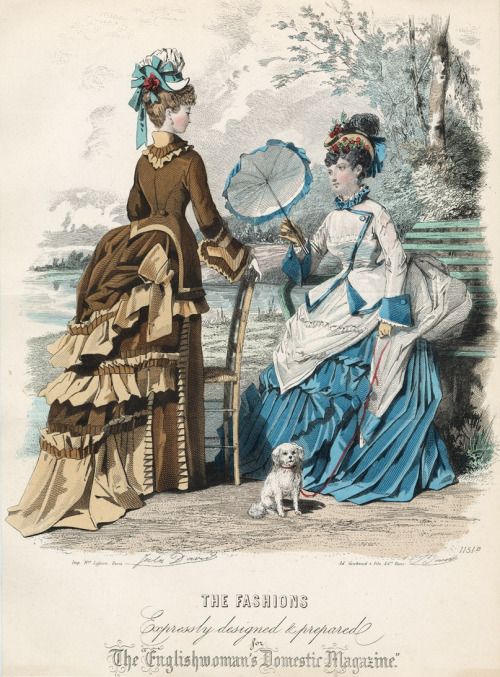
1874 – The overall shape of women’s outfits is flat in front with all fullness pulled to the back, the sides are slender. Tieback skirts come into fashion. “The wearer no longer stands in the center of a circle, but the front of an ellipse.” This year marks the culmination of the movement begun in the 1860’s with the move to the elliptical hoop. The cuirass bodice appears and the bustle begins to diminish. Waists become longer.
1875 – The cuirass bodice and the tieback skirt with a train grow in popularity and gain the nickname ‘mermaid’s tail.’ These tight-fitting fashions cause difficulty for women when walking and sitting. The puffs in the back at the bottom of the bodice and the bustle itself disappear. From a period magazine, “Were it not for the back-train, dresses would look like a towel wrapped round.” The horse Aristides wins the first Kentucky Derby.
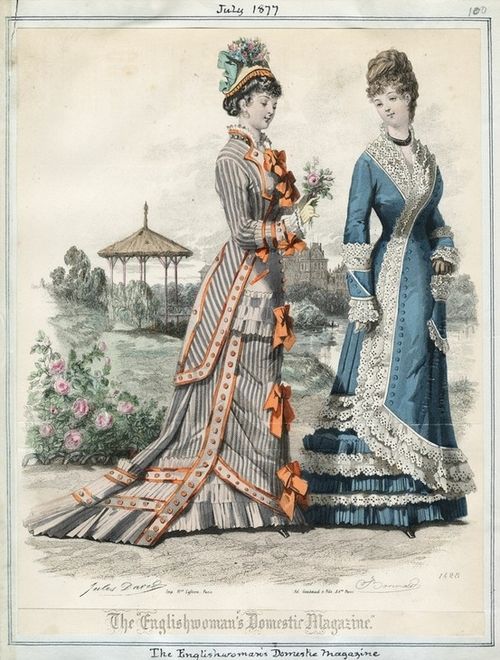
1876 – The long, tight bodice, narrow sleeves, and narrow skirts encased women’s bodies. Trimming became asymmetrical, and in 1876 a style arose of placing large ornate pockets far back on the skirt or polonaise. This was pickpocket heaven! Women began adopting a loose dressing gown for breakfast, the forerunner of the teagown. In other news, Alexander Graham Bell makes the first phone call and General George Armstrong Custer is killed in the Battle of Little Big Horn. The United States government decrees that all Native Americans must move onto a system of reservations.
1877 – Women’s clothing continued to be narrow and close fitting, emphasizing a vertical line. In the latter part of the decade the teagown and tennis dress appear, as does the ‘tailor-made’, an outfit similar to a riding habit. In Britain the teagown, although slightly scandalously loose fitting, becomes acceptable wear for five o’clock tea in the country.

1878 – The Aesthetic Dress movement affects general fashion’s color schemes and styling. Neutral tint foundations and gorgeous needlework vie with the aniline dyes and layers of trim. Fashion trends fall mainly into three groups: the Aesthetic with simple flowing folds; the mainstream closefitting bodices with tie-back skirts and mounds of trimmings; and the tailor-mades with streamlined shapes and conservative trimming. The short (ankle-length) dress is re-introduced and yokes appear in day bodices. The pannier even returns. Thomas Edison patents the phonograph.
1879 – As the 1870’s come to a close the pannier begins to replace the sheath and Artistic Dress influences, and tailor-mades come to the forefront. Artistic Dress colors such as dull greens, peacock blues, and deep reds become more popular. The vertical line is softened, and panniers emphasize the hips. President Rutherford B. Hayes signs legislation allowing women attorneys to argue Supreme Court cases.
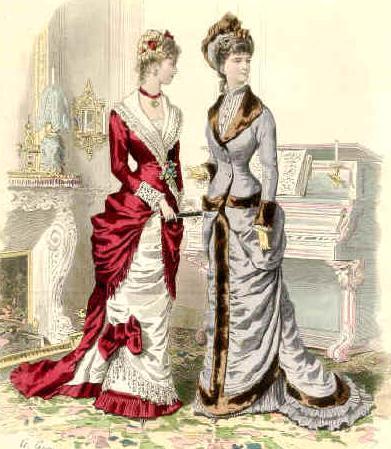
From bustles to cuirass bodices and tie-back skirts to the return of the pannier, the 1870’s exhibited drastic changes in women’s fashions. From the final dissolution of the Confederacy and technological advances to the burgeoning women’s suffrage movement we saw equally drastic changes in American society.
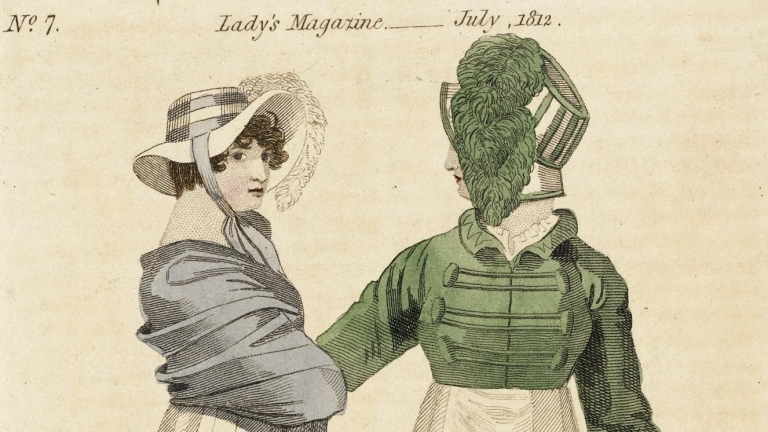
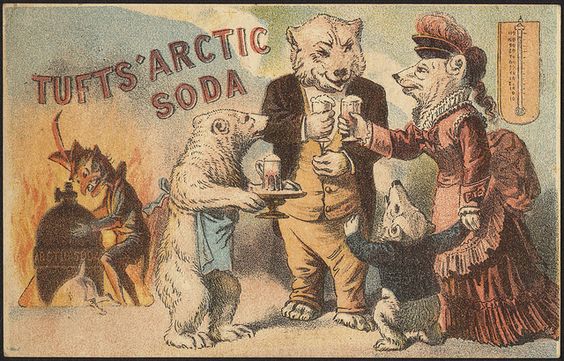
Leave a comment